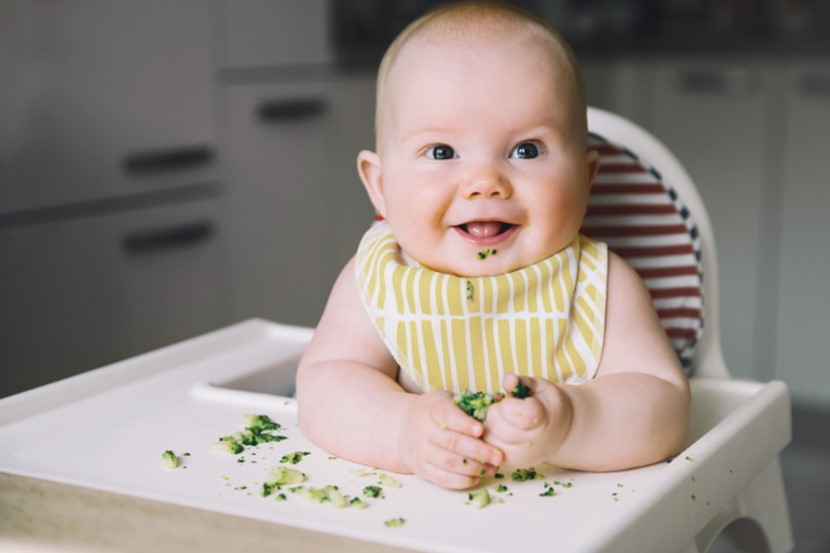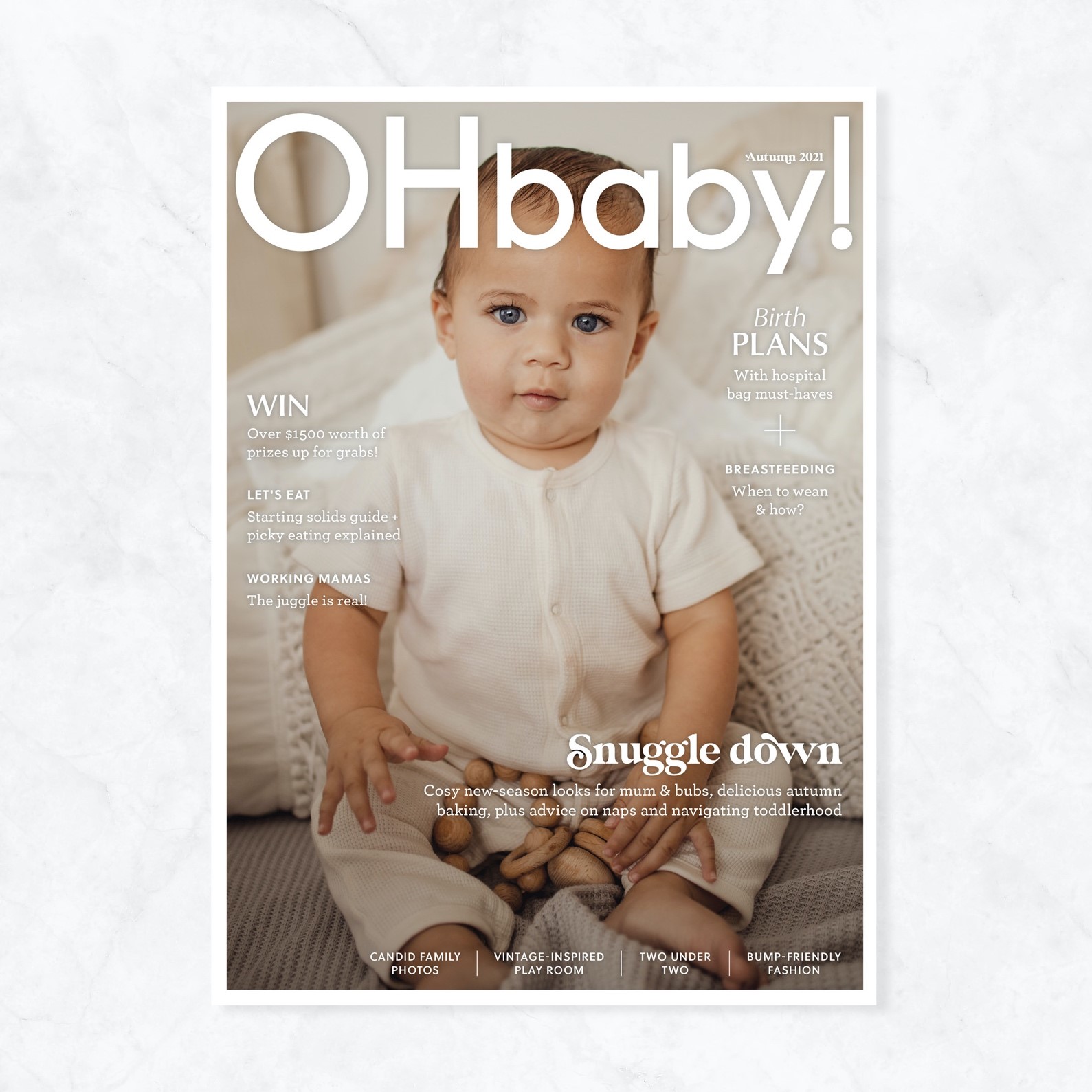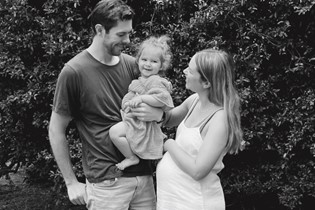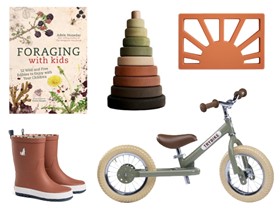When & how to start your baby on solid food

Introducing your baby to solids is an exciting journey, but there are lots of unknowns for first-time parents. Jennifer Douglas, from Jumpstart Nutrition, guides us through starting solids.
Every baby’s journey of starting solids is different and it's important to listen to your baby on what suits them best. There are some babies who absolutely love food and devour every bite, and others who are not that fussed and enjoy only a wee taste before saying they have had enough.
When to start
Every baby is ready for solids at slightly different times, but most babies are ready around six months. It is important not to introduce solids before four months as the baby’s gut is too immature to cope with food. Before starting on the solids journey, your baby needs to show signs of readiness to start solids and these are:
- Your baby can hold their head up
- Your baby can sit with little help
- Your baby is interested in food and may reach for yours
- Your baby opens their mouth when food approaches
- Your baby can keep food in their mouth without pushing it out
- Your baby is showing signs of biting and chewing
If you start solids and find that your baby is pushing out all their food, or becoming upset when you are feeding them, then just wait 1-2 weeks and try again.
How to start
Milk feeding, with either breast milk or formula, continues to be the main source of nutrients for your baby while you are starting out. When starting solids, you should give your baby a milk feed beforehand as this helps with digestion and ensures you're coming into it in a relaxed mood. Once your baby is established on solids and taking good amounts, you can switch to offering food before milk; this happens around 1-2 months after starting solids.
Give your baby solids at a time of day when they are relaxed and happy (could be the morning or afternoon, depending on your baby and circumstances) and start with one meal per day, increasing to 2-3 meals when your baby is taking good amounts and is keen to have more. You can feed your baby either in your lap or placed in a supportive highchair.
Spoon feeding or baby-led weaning?
There are two approaches to starting solids that are common in New Zealand. The most traditional approach is to offer smooth, pureed family foods from a baby spoon. Pureed foods will initially be smooth, then you will serve the food with more lumps and texture before moving to chopped up family foods by the time your baby is 11-12 months of age.
Another common approach is baby-led weaning, which involves offering soft finger foods to your baby to feed themselves. From the start you will offer strips of cooked vegetables, meats/other proteins, fruits, bread and other handheld foods that are soft enough to be easily squashed between two fingers. Research has shown that both approaches offer the same nutritional benefits, but it is important to know what works best for your child.
Let your baby tell you what method of feeding they want as there may be days, or even times of the day, when they want to feed themselves and other times when they want you to feed them. I have two children and both were clear on the way they wanted to be fed. My son was happy to be spoon-fed and loved food (in fact, even at eight years of age I think he might still let me spoon-feed him!) while my daughter was ‘Miss Independent’ and pushed the spoon away whenever it was offered and insisted on eating whole family foods by herself. So, before you decide which method to choose, have an open mind to letting your baby guide you on which path to take. A bit of both works best for most babies.
What to give
By around six months of age, your baby’s iron stores (received from Mum during pregnancy) have reduced. Therefore, it is important to introduce iron-rich foods soon after starting solids. These include meat, fish, chicken, lentils, beans, eggs, nut butters and iron-fortified baby cereals.
First foods that work for babies:
- Pureed or softly cooked starchy veges (eg kumara, carrot) and non-starchy veges (eg broccoli, spinach)
- Pureed or softly cooked fruits (eg apple, banana)
- Pureed meats or strips of meat in a mesh bag (eg lamb, beef, chicken, fish)
- Pureed or softly cooked beans, lentils, eggs
- Iron-fortified baby cereals mixed with milk and stewed fruits (vitamin C from fruit helps with iron absorption)
- Pureed rice, quinoa, oats that can be mixed with proteins or vegetables
The focus should be on home-cooked foods rather than commercially prepared foods. Commercially prepared foods (especially pouch foods) should be occasional foods for when you are out and about. Getting your baby used to your family foods is essential to ensure they love the same foods as you. You can add herbs and spices to your baby’s food but avoid adding salt, sugar or honey until they are over one year of age.
How to reduce the risk of choking
In December 2020, the Ministry of Health updated their guidance on reducing the risk of choking in children. Some ideas to reduce the risk of choking are:
- Hard foods eg carrot, apple – cook pieces until soft, grate, or thinly slice using a mandolin
- Small round or oval food, eg grapes, peas – quarter or finely chop grapes; cook and squash peas with a fork
- Food with skin, eg chicken, stone fruit, pears – remove skin or cook food until soft and cut into strips (remove stones from stone fruit)
- Leafy foods eg lettuce, spinach – finely slice
- Compressible foods, eg sausage, marshmallow – cut in lengths or quarters rather than rounds
- Meat – ideally choose minced or shredded meat
- Foods with bones, eg fish, chicken nibbles – remove all bones
- Thick pastes, eg peanut butter – thinly spread on toast or vegetables and use smooth varieties rather than crunchy
- Fibrous or stringy foods, eg raw pineapple – slice these across the grain, peel off skin and remove strong fibers if possible
How much to give
Start by offering a few teaspoons of food or a few small pieces of finger foods. Let your baby guide you on increasing quantity. Your baby wants more food if they are opening their mouth for more, looking excited when food is presented to them and they are looking at, touching and tasting the food in a positive way. Your baby will tell you they have had enough to eat when they push the spoon away from them, start spitting out the food, become upset or turn their head away from food.

It can be frustrating when you have spent time in the kitchen preparing food only to find your child has two bites and does not want any more. However, it is important to trust your baby’s ability to regulate perfect growth with milk and food. Trusting your baby’s feeding cues will enable them to continue good regulation of food intake for the future.
How to introduce allergen foods
These days it is common to meet individuals with food allergies and around 10% of babies under one year of age have food allergies in New Zealand. The most common food allergens are milk, egg, wheat, soy, nuts, sesame, fish and seafood; but you can potentially be allergic to any food. Research over the past few years has shown us that early introduction of allergen foods into your baby’s diet can reduce the risk of food allergy. This means that between six and 12 months old, allergen foods should be started with your baby. Once you start it is a great idea to keep the allergen food as a regular part of their diet to ensure continued tolerance to the food.
It's a good idea to introduce allergen foods when your baby is well, and with another adult present. Give your baby a small amount of the allergen food inside their mouth and then observe them over 2-4 hours. If there is no reaction, then give them some more, increasing the amount over a few days. Once the allergen food is safely in your baby's diet, keep it in.
A food reaction can be scary – things to look out for in your baby would be a rash that spreads and may turn to hives, projectile vomiting, going pale and floppy, having difficulty breathing or a constant coughing noise. If any of these reactions occur, you should seek medical assistance immediately. Mild reactions may be shown as blood or mucous in stools, liquid diarrhoea, vomiting or a skin reaction. These milder reactions can be discussed with your health professional.
Jennifer Douglas is a registered dietitian specialising in children’s nutrition, food allergies and intolerances, and fussy eaters. She sees families for nutrition consults in Dunedin or throughout NZ via Zoom, as well as offering online seminars. jumpstartnutrition.co.nz.

AS FEATURED IN ISSUE 53 OF OHbaby! MAGAZINE. CHECK OUT OTHER ARTICLES IN THIS ISSUE BELOW

















